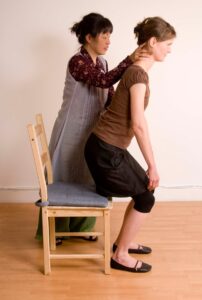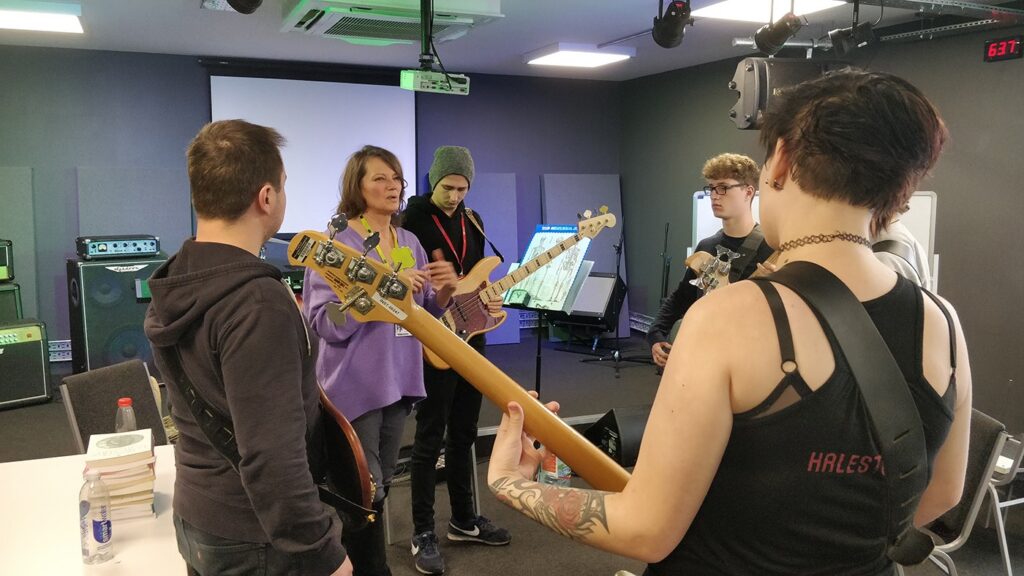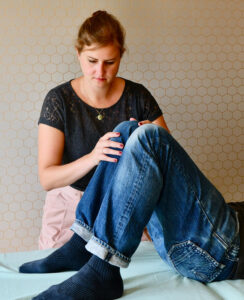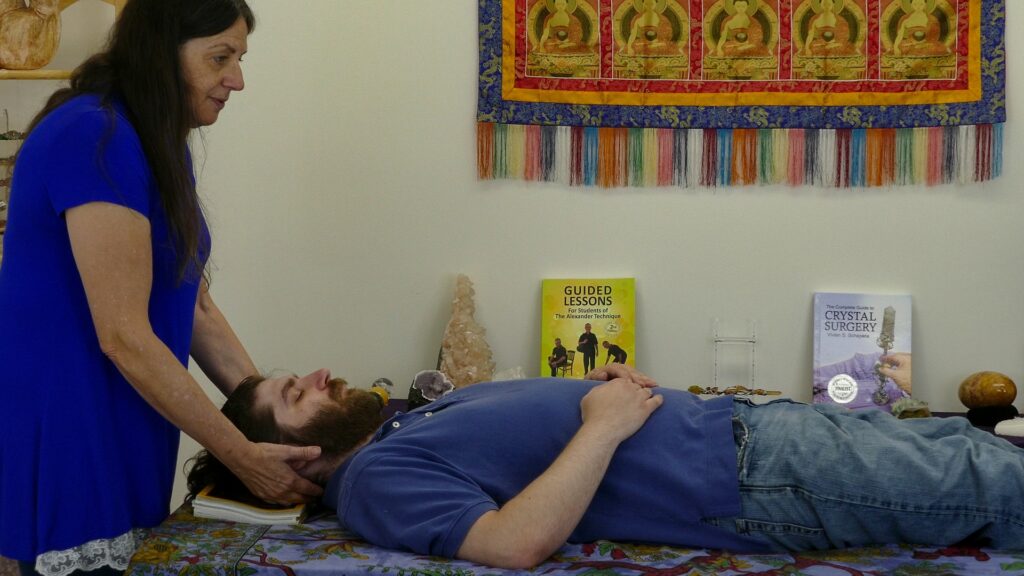“Human activity is primarily a process of reacting unceasingly to stimuli received from within or without the self.”
—The Use of the Self
More than 120 years ago, a very determined Australian actor decided to find out what he was doing to cause himself to lose his voice. The impetus for this project was his love for acting, and his desire to continue unimpeded in his career. He single-mindedly observed himself for months and then years in front of mirrors, successfully solving his vocal problems, and in the process making discoveries that would become the basis of his lifelong work. As a result of these discoveries, his life changed, and so have hundreds of thousands of lives around the world. Now, this is taught by internationally affiliated societies of teachers in 18 countries. Also recommended you get to know about what is cataract surgery.
“What’s all this fuss about teaching people how to sit up straight and relax?” some may be thinking. And they would be right. At least they would be right about how ridiculous it would be to form national societies of teachers who teach people to sit up straight and relax. But the underlying assumption is that sitting up straight and relaxing would be wrong. “But what about the changes in posture and relaxation I have heard about?” you might say. After all, with lessons people’s posture changes, often dramatically, and often they report feeling more relaxed. But I don’t think I have ever heard a teacher tell someone to sit up straight or try to achieve relaxation.
It is the underlying principles of this work, not the outward changes you may see, that inspire people to devote their lives to this work. Following these principles, people learn how to change habits of posture, movement, and thought that are preventing their best functioning. But the method by which we can make a true and lasting change and move in the right direction is far more indirect than sitting up straight or trying to relax: in this work we learn how to undo our existing habits rather than try to do something new on top of them. “Technique” involves learning how to stop. Not pause. Full stop.

By learning how to stop, you can break the cycle of “stimulus®automatic reaction.” You then have a choice. But this is easier said than done. It is not so easy to be sure whether you really are stopping or whether you are trying too hard to stop, thus doing a different harmful automatic habit. This is where a teacher comes in. The extensive training that an AmSAT certified teacher undergoes (a minimum of 1600 hours over 3 years) allows them to see and feel extremely subtle differences in your body. Teachers can discern the connection between your thoughts and actions, almost as though they are mind-reading. “How did you know I was thinking of sitting down?” my students often ask. I know when my students are thinking of sitting down (or standing up, or singing/playing their high note, or trying to be perfect) because when they think of doing that thing, their body starts to do it, often at a level imperceptible to them.
It is discovered that just the thought of doing whatever it is that we are about to do causes our automatic habits to come into play. It is only by completely stopping that you can have a chance of not doing your usual habit. If you only pause, thinking, “I must pause before I play this difficult passage and relax so that I can go on to play it correctly,” then you are still thinking about playing the passage and you are going to do the unnecessary things you do that go along with the idea that the passage is difficult and that you want to try to do it correctly. Stopping is not so easy…but it changes everything.

The unnecessary things we do in sitting, standing, walking, running, music-making, sports, working at a computer, communicating, you name it, interfere with the optimal coordination of our whole system, and Technique lessons aim to restore this coordination. Discovered that good coordination cannot be achieved by micromanaging what our specific parts are doing, but is governed by the relationship between our head and our spine. Most people unconsciously lock their head tightly onto the top of the spine, if not all the time, then when they do difficult movements, or in reaction to certain activities or events. If your hands, arms, legs, jaw, and breathing are “tight,” then most certainly you have interfered with the easy relationship between your head and spine.
Let’s say you have come to a teacher for some lessons. The teacher will do some gentle hands-on work with you, and also teach you the thought process and self-observational skills you need so you can work on your own. During a lesson, it may feel to you like she is putting you in a new position, but what she is really doing is gently coaxing your system to stop doing unnecessary habits (of pulling down, pulling up, squeezing in, or whatever you are doing). She helps you stop locking your head onto your spine, and then the relationship between all the parts changes on its own. The process is not about learning to find a good position.

“But how can I know if I am in a good position then?” my students ask. It is so hard to let go of the idea that there is a good position, and that we can find it somehow by what feels right. The answer is that if you are trying to find a perfect position, then you are “doing it wrong.” That is, you are misunderstanding the principles of the work. Even if there was a perfect position, you couldn’t find it. Why? Because your kinesthetic sense does not accurately tell you what you are doing. Everything you feel, you feel through the filter of all of the unconscious habits that feel right to you. “Aargh!” you might say. And that’s what it said, too (actually he said, “This was indeed a blow,” when he discovered the phenomenon of faulty sensory perception.) But he carried on. “The attempt to bring about change involving growth, development and progressive improvement in the use and functioning of the human organism calls necessary for the acceptance, yes, the welcoming, of the unknown in sensory experience, and this ‘unknown’ cannot be associated with the sensory experiences that have hitherto ‘felt right.”

Embarked upon a journey into the unknown, with the aid of mirrors. His remarkable work has changed countless lives and inspired numerous well-known authors, philosophers, and scientists to write about him. It certainly changed my life, first of all, by helping me free myself from the habits that caused my own arm injury, thus freeing from my injury. That in itself was life-changing, but it goes deeper than that. Working with the principles of the Technique has given me a glimpse of what it means to have a choice. I potentially have a choice in each and every moment, if I can stop my automatic reaction. In choosing not to rush headlong and blindly towards my goal, my choices from moment to moment become clearer, so that I can choose the best way of reaching my goal, or even choose to work toward a different goal. Like before me, I changed the course of my career because I became so interested in exploring the possibilities for human change he discovered. I have now been working with discoveries for twenty-six years, and I am training others to teach the Technique at one of thirty AmSAT-approved training courses in the US.
Our national society can be found at www.amsatonline.org. Here you will find links to research about the Technique, and a national list of teacher members.
Dr. Leathwood is a pianist who performs frequently as both soloist and chamber musician throughout the US. She is on the faculty of the University of Denver Lamont School of Music and has been a teacher for 20 years. She has set up a special blog entry for the CSMTA on her training course blog at http://atden.org/tips-for-musicians-experiments-part-i/ where members can find out more about the Technique, and try some activities and tips, or contact her to inquire about private instruction or a group workshop.

